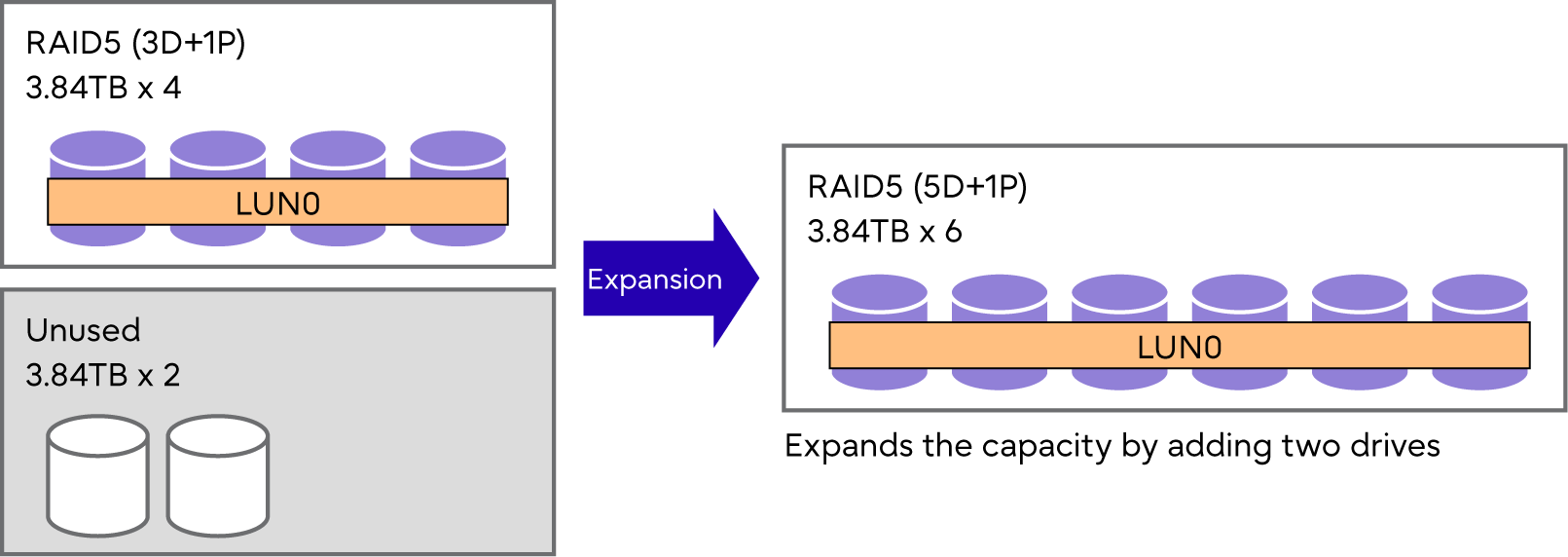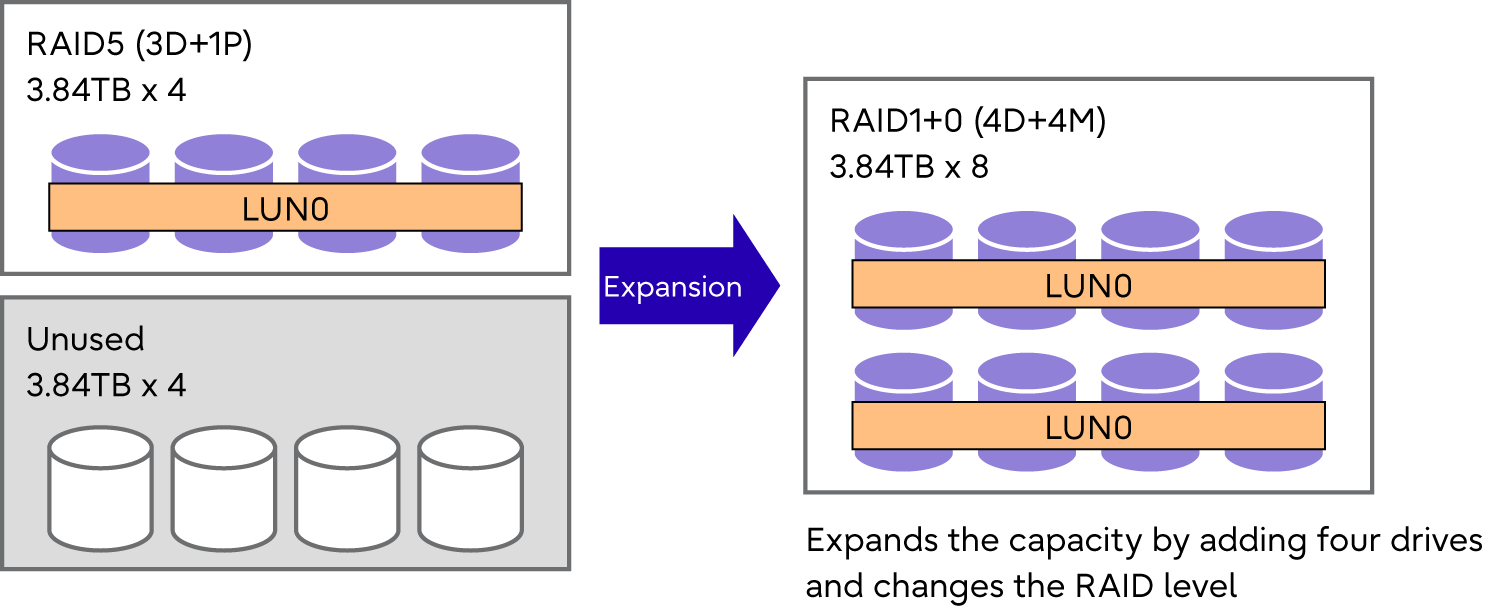Logical Device Expansion
Logical Device Expansion (LDE) allows the capacity of an existing RAID group to be dynamically expanded by changing of the RAID level or the drive configuration of the RAID group. When this function is performed, drives can be also added at the same time. By using this LDE function to expand the capacity of an existing RAID group, a new volume can be added without having to add new RAID groups.
- Expand the RAID group capacity (from RAID5(3D+1P) g RAID5(5D+1P))Figure: Logical Device Expansion (When Expanding the RAID Group Capacity)

- Change the RAID levels (from RAID5(3D+1P) g RAID1+0(4D+4M))Figure: Logical Device Expansion (When Changing the RAID Level)

LDE works in terms of RAID group units. If a target RAID group contains multiple volumes, all of the data in the volumes is automatically redistributed when LDE is performed. Note that LDE cannot be performed if it causes the number of data drives to be reduced in the RAID group.
In addition, LDE cannot be performed for RAID groups in which the following conditions apply.
RAID groups that belong to TPPs or FTRPs
RAID groups that are registered as REC Disk Buffers
RAID groups that are registered as Extreme Cache Pools
RAID groups in which volumes are not registered
RAID groups in which WSVs are registered
RAID groups whose stripe size has been expanded
RAID groups that are configured with RAID5+0 or RAID6-FR
LDE may not be available when other functions are being used in the ETERNUS DX or the target RAID group.
For details on the functions that can be executed simultaneously and the number of simultaneous executions, refer to Combinations of Functions That Are Available for Simultaneous Executions.
Since the data cannot be recovered after the failure of LDE, back up all the data of the volumes in the target RAID group to another area before performing LDE.
If drives of different capacities exist in a RAID group that is to be expanded while adding drives, the smallest capacity becomes the standard for the RAID group after expansion, and all other drives are regarded as having the same capacity as the smallest drive. In this case, the remaining drive space is not used.
If drives of different rotational speeds exist in a RAID group, the access performance of the RAID group is reduced by the slower drives.
If configuring RAID groups with Advanced Format drives, the write performance may be reduced when accessing volumes created in the relevant RAID group from an OS or an application that does not support Advanced Format.



